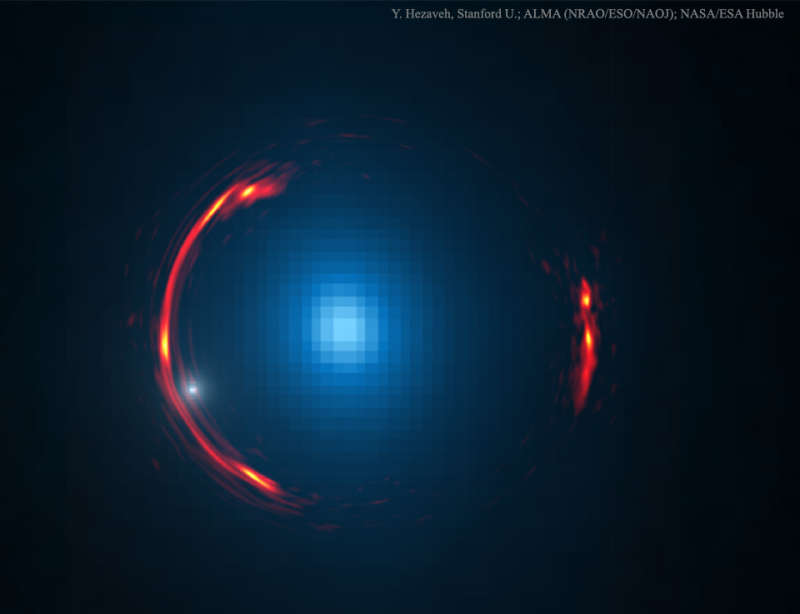
|
Credit & Copyright: Y. Hezaveh
(Stanford)
et al.,
ALMA
(NRAO/ESO/NAOJ),
NASA/ESA
Hubble Space Telescope
Explanation:
Can one galaxy hide behind another?
Not in the case of
SDP.81.
Here the foreground galaxy, shown in blue in an image taken by the
Hubble Space Telescope, acts like a huge
gravitational lens,
pulling light from a background galaxy,
shown in red in an image taken in
radio waves by the
Atacama Large Millimeter Array (ALMA), around it, keeping it visible.
The alignment is so precise
that the distant galaxy is distorted into part of a
ring around the foreground galaxy, a formation known as an Einstein ring.
Detailed
analysis of the
gravitational lens distortions
indicate that a small dark satellite
galaxy
participates in the deflections, bolstering indication that many
satellite galaxies are quite dim and dominated by
dark
matter.
That small galaxy is depicted by a small white dot on the left.
Although spanning only a few arcseconds,
the featured Einstein ring is really tens of thousands of
light years across.
Comments, questions? Just click the Discuss link two lines below.
|
January February March April May June July August September October November December |
| ||||||||||||||||||||||||||||||||||||||||||||||||
NASA Web Site Statements, Warnings, and Disclaimers
NASA Official: Jay Norris. Specific rights apply.
A service of: LHEA at NASA / GSFC
& Michigan Tech. U.
Based on Astronomy Picture
Of the Day
Publications with keywords: gravitational lens - dwarf galaxy
Publications with words: gravitational lens - dwarf galaxy
See also:
